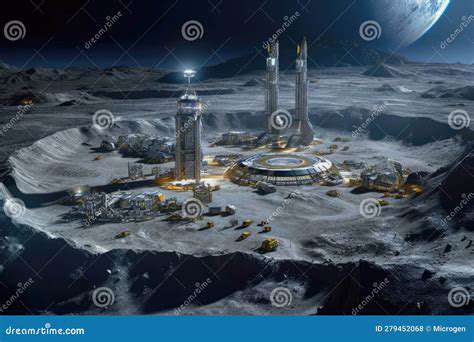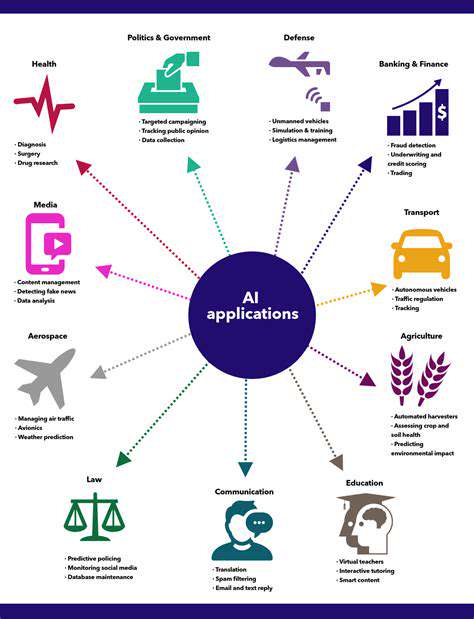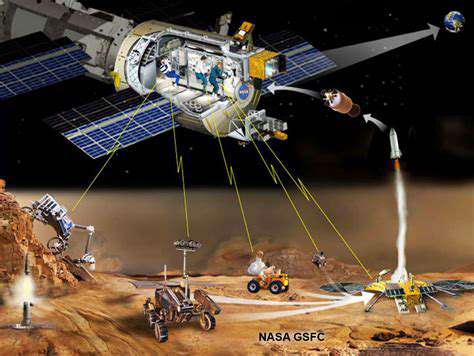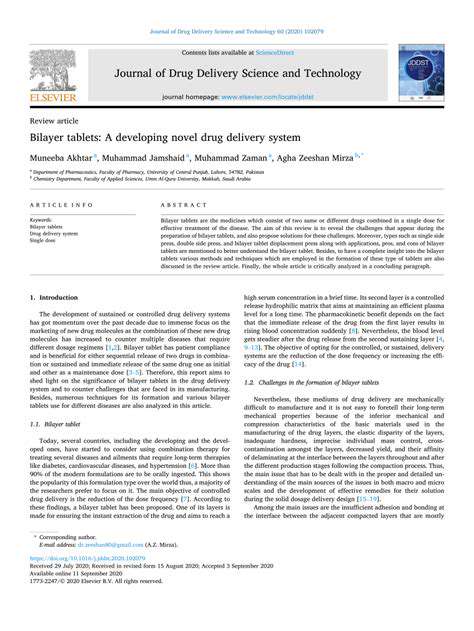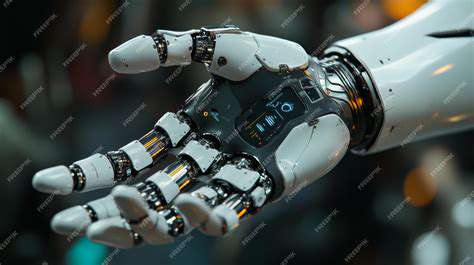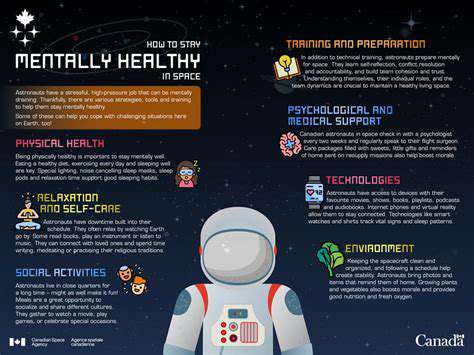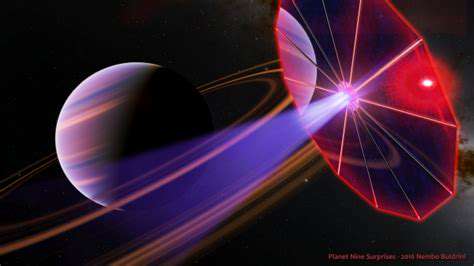
Ion Propulsion: A Revolutionary Approach
Modern spacecraft propulsion has seen remarkable innovations, with ion propulsion standing out as a game-changer. Instead of relying on burning fuel like traditional rockets, this method uses electric fields to push ions at incredible speeds. Though it generates less immediate thrust than chemical rockets, its ability to operate for extended periods with minimal fuel makes it perfect for long-haul space missions. The efficiency gains are substantial, allowing probes to travel farther than ever before.
High Specific Impulse: Fuel Efficiency Maximized
What sets ion propulsion apart is its unmatched fuel efficiency. By accelerating ions electrically, these systems achieve speeds far beyond what chemical reactions can offer. This translates into longer missions without the need for constant refueling. Imagine sending a probe to the outer planets without worrying about running out of fuel halfway—this is the promise of ion propulsion.
Advantages Over Chemical Rockets
Chemical rockets, while powerful, burn through fuel rapidly. Ion propulsion, on the other hand, sips fuel slowly, making it ideal for missions where every gram counts. Its precision and endurance enable complex maneuvers over years, something chemical rockets simply can't match. Whether adjusting orbits or cruising to distant asteroids, ion thrusters provide the steady, reliable push needed for success.
Challenges and Limitations
No technology is perfect, and ion propulsion is no exception. Its low thrust means slower acceleration, making it less suitable for quick launches or emergency maneuvers. However, engineers often pair it with traditional rockets to get the best of both worlds—initial burst from chemicals, sustained push from ions.
Applications in Space Exploration
From deep-space probes to satellite station-keeping, ion propulsion is carving out a critical niche. Missions to Mars or beyond benefit enormously from its efficiency, allowing more scientific instruments to be carried instead of extra fuel. Its gentle, continuous thrust is also perfect for maintaining precise orbits around planets or asteroids.
Future Directions and Developments
Researchers are working tirelessly to boost ion thruster power while shrinking their size. Breakthroughs in this area could unlock even more ambitious missions, perhaps even crewed voyages to the outer solar system. Alternative propellants and novel designs are also being explored, each promising to push the boundaries of what's possible in space travel.
Nuclear Propulsion: Harnessing Atomic Power
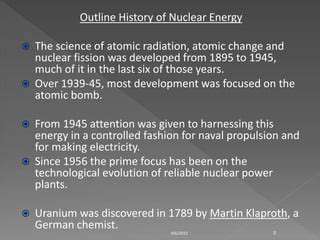
Harnessing Atomic Power for Space Travel
Nuclear propulsion represents a bold leap forward in space exploration technology. By tapping into the immense energy of nuclear reactions, we could slash travel times to distant worlds, making Mars missions faster and more feasible. Unlike conventional rockets that burn fuel inefficiently, nuclear systems promise sustained high thrust, potentially revolutionizing how we explore our solar system.
The Advantages of Nuclear Propulsion
The energy packed into nuclear fuel dwarfs that of chemical propellants. This means spacecraft can carry less fuel and more science gear, dramatically increasing mission capabilities. Faster transit times also reduce radiation exposure for astronauts—a critical factor for crewed missions. While technical hurdles remain, the potential rewards make this technology too promising to ignore.
Types of Nuclear Propulsion Systems
Engineers are exploring multiple approaches to harnessing nuclear power in space. Thermal systems heat propellant directly, while electric variants generate power for ion drives. Each has unique strengths that could be tailored to specific mission profiles, from quick planetary hops to decades-long interstellar journeys.
Safety and Environmental Concerns
Handling nuclear materials in space demands rigorous safety protocols. From launch safeguards to disposal plans, every aspect must minimize risks to both astronauts and the environments we explore. While challenges exist, history shows we can manage nuclear technology responsibly when proper precautions are taken.
Challenges and Future Directions
Building compact, reliable space reactors requires solving complex engineering puzzles. Equally important is establishing clear regulations to ensure this powerful technology is used safely and ethically. As these pieces fall into place, nuclear propulsion could transform humanity into a truly spacefaring civilization.
These lettuce wraps are incredibly quick and easy to prepare, perfect for busy weeknights. The entire process, from chopping the ingredients to assembling the wraps, takes less than 30 minutes. This streamlined approach allows you to focus on other aspects of your day while still enjoying a delicious and healthy meal. The simplicity of the recipe also means less dishes to clean up, which is always a plus when you're short on time.
Advanced Concepts: Fusion Propulsion and Beyond
Fusion Propulsion: Harnessing Stellar Power
Fusion propulsion could revolutionize space travel by mimicking the power of stars. While still experimental, successful development could enable journeys to neighboring star systems within human lifetimes. The challenges are immense—containing star-like temperatures in a spacecraft is no small feat—but the potential rewards justify the effort.
Beyond Fusion: Antimatter Propulsion
Antimatter represents the ultimate energy source, packing incredible power in microscopic amounts. While production and storage remain problematic, even small advances could yield dramatic improvements in spacecraft performance. This remains a long-term goal, but one that could eventually make interstellar travel routine.
Advanced Propulsion Systems: Emerging Technologies
From enhanced ion drives to theoretical warp concepts, researchers are exploring every conceivable avenue to break free from conventional propulsion limits. While many ideas remain speculative, each represents potential pathways to overcoming the vast distances separating us from the stars.
Propulsion for Spacecraft Maneuvers: Precision and Efficiency
Modern missions demand precise control, whether docking with space stations or landing on distant worlds. Advanced propulsion systems provide the fine-tuned adjustments needed for these delicate operations, ensuring mission success where older technologies might fail.
The Future of Space Travel: A Propulsion Revolution
As propulsion technologies advance, our cosmic horizons expand. What seems impossible today may become routine tomorrow, opening new frontiers for exploration and discovery. The coming decades promise exciting developments that could redefine humanity's place in the universe.
The Future of Interstellar Travel: A Multifaceted Approach

Pioneering New Frontiers:
Interstellar travel requires breakthroughs across multiple disciplines, not just propulsion. From radiation shielding to closed-loop life support, each technological hurdle must be overcome to make multi-generational voyages feasible. The challenges are daunting, but so too are the potential rewards of becoming an interstellar species.
Overcoming Technological Hurdles:
The vast distances between stars demand innovative solutions to problems we're only beginning to understand. Reliable communication across light-years, sustainable ecosystems for crews, and materials capable of withstanding decades in space—all must be developed before we can seriously consider star travel. Each solution brings us closer to making this dream a reality.
Ethical and Societal Implications:
As we contemplate leaving our solar system, we must consider who gets to go and what responsibilities we carry into the cosmos. International cooperation will be essential to ensure space exploration benefits all humanity, not just the technologically advanced nations. These discussions must happen alongside the technical developments to create a future we can all be proud of.
